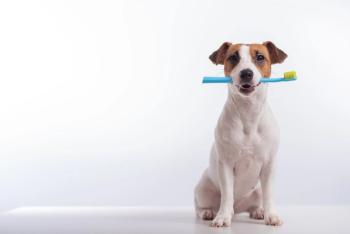
Comparison of Tracheal Wash and Bronchoalveolar Lavage in Equine Patients
A recent study analyzed the 2 methods for detecting lower respiratory tract disease.
Tracheal wash (TW) and bronchoalveolar lavage (BAL) are common tools for detecting lower respiratory tract disease in equine patients; however, many studies show a poor correlation between these 2 techniques. Conventional cutoff values for airway inflammation include neutrophil percentages of 20% or higher for TW and 5% or higher for BAL.
Researchers in Finland recently performed a
Study Design
The study targeted client-owned horses presenting to Helsinki University Equine Teaching Hospital for respiratory signs. When possible, the investigators examined an asymptomatic companion horse from the same owner. Horses were divided into 3 study groups based on clinical exam and endoscopy results.
RELATED:
- First Live-Attenuated Equine Influenza Vaccine Developed, Tested
- Equine Hepacivirus Research Could Guide Development of Hepatitis C Vaccine
TW and BAL were performed sequentially under sedation after at least 12 hours of rest. During the procedure, tracheal mucus deposits were also graded based on level of severity. BAL was performed within a small bronchus in the right caudodorsal lung lobe. A single technician interpreted all cytologic samples, and sample results were presented as differential cell counts out of 300 total cells.
Because a true gold standard diagnostic test for equine inflammation does not exist, researchers included a Bayesian model during data analysis to determine optimal cell percentage cutoff values for detecting clinical respiratory disease.
Results
Researchers examined 154 horses from 2009 to 2015 with a median age of 10 years (range, 1 to 26 years). Horses were categorized as follows:
- Group 1: 33 clinically healthy horses with no respiratory signs
- Group 2: 79 horses with at least 1 respiratory sign
- Group 3: 42 horses displaying a combination of cough and nasal discharge and/or a mucus score of 3/3 on endoscopy
The most common clinical signs observed in groups 2 and 3 were cough (69 horses), poor performance (66 horses), and nasal discharge (43 horses).
Neutrophil and macrophage percentages were significantly different among the 3 study groups. TW and BAL neutrophil percentages from most horses correlated with each other based on conventional cutoff values of 20% and 5%, respectively. However, 17.5% of horses were classified differently on each of the 2 tests. Tracheal mucus quantity correlated with TW and BAL neutrophil percentages, suggesting that visible tracheal mucus likely indicates neutrophilic airway inflammation.
Conventional and Bayesian statistical comparison of groups 1 and 3 indicated that TW was more sensitive and specific than BAL at detecting lower respiratory tract disease, although TW neutrophil values still overlapped between healthy and diseased horses when conventional neutrophil cutoff values were used. Optimal sensitivity and specificity were obtained at cutoff values of 17.7% for TW and 7% for BAL.
Take-home Message
TW was generally more accurate than BAL at differentiating clinically healthy horses from those with respiratory disease, and the conventional cutoff values for TW and BAL neutrophil percentages remain clinically appropriate. The authors emphasized that TW and BAL results should always be combined with patient history, physical examination, and endoscopy results for optimal interpretation of respiratory disease.
Dr. Stilwell received her DVM from Auburn University, followed by a MS in Fisheries and Aquatic Sciences and a PhD in Veterinary Medical Sciences from the University of Florida. She provides freelance medical writing and aquatic veterinary consulting services through her business, Seastar Communications and Consulting.
Newsletter
From exam room tips to practice management insights, get trusted veterinary news delivered straight to your inbox—subscribe to dvm360.




